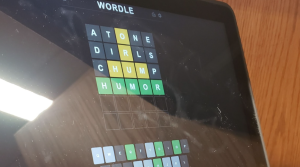Is EHS Adequately Prepared for a Campus Lockdown?
December 14, 2017
The nation and the world have been in shock due to all of the recent shootings, especially in America. But one of the scariest types of shootings of all time, are those that take place within a school.
Could schools be improving procedures to prevent these? Do people need to become more educated on what to do in a scenario like that? Should windowed classrooms have different procedures?
We have all practiced lockdown and secure perimeter drills since all the way back to our time in elementary school.
Lockdowns require us to sit on the floor across from the windows, cover the glass on the doors with a magnet, turn all the lights off, and not talk.
Secure perimeter drills have us continue class like we normally would.
Most of the time there are people playing on their phones, giggling, and talking.
But what if the situation were real, would you really be prepared given this is how you’ve known drills to go for all your life? Do you know everything about the actual procedure if that drill became a reality?
Some students know of the procedures based upon past drills. But some students like Zach Harris are asking for more in case of a real life threat.
“I would like to be more informed about them,” he said, “and there should be a more educational way on why we do these procedures, and how to effectively use them,” he said.
For others who know the procedures, they mostly believe that their function and organization is overall well mapped out.
However, they do believe there should definitely be some changes with these drills to insure our security.
“For a majority of the procedures, I have a lot of confidence in the system. If there were any improvements that could ever be made for the benefit of our safety, I would like to see more than two SRO’s around the school that are actively walking around and at the doors.
If they are more heavily armed while they are on school duty, they have a higher ability to stop a hostile intrusion on the school,” says Caitlin Killgore.
The amount of defense a school should have has been a highly debated topic, but when it comes to worst case scenario, some students think that we should definitely have more people there to fend for those who can’t. That it can save the lives of those who would normally be lost.
Others also believe that teachers should have access to some form of defense within the classroom, if the need arises where it means defending the lives of the people who are defenseless.
Teachers would be the only ones able to help defend, and thus Harris agrees that we should give teachers the ability to defend both themselves and their students.
“I absolutely think so. A good example is a CCW permit on campus,” says Harris.
Alternatively Harris also believes restrictions should be put into place.
“What those restrictions are exactly, should be left debatable to the board,” he said. Many students see increased defenses as an optimal addition that should be included within procedures. But, there are students who see some problems with potentially giving teachers access to defense as well.
Some students already feel a disconnect with their teachers, and therefore wouldn’t trust them to defend their students at full capacity given a shooter was able to breach a classroom.
“I think if it came down to it, students would be left to fend for themselves in some cases,” states Jamie Dickerson. Others may fear that teachers having access to a weapon for defense could be just as dangerous as if there were an active shooter in the classroom. But Caitlin Killgore counters this.
“Teachers should be required to be trained in self-defense. If you put this in a real life situation, it’s only common sense,” she claims, “if a shooter gets into your classroom, and your students’ only protection is your own body, you are putting your life and most of the students’ in jeopardy.” She proposes a solution as well.
“If the teacher is trained like something with a taser that they will only be able to access during crucial situations, they have a way higher chance of stopping or at least delaying the attacker util an armed SRO is present.” With proper training, she believes that teachers could become a valuable defense and help save the lives of students given a dire situation.
Another concern among students is windowed classrooms. Some believe the procedures should work well given the blinds and shut quickly so that no one can see in.
“Having the blinds closed, especially during an active shooter situation, is the best possible route for a higher safety turnout,” agrees Harris.
But others believe that there should be some changes to procedure and the schools themselves for windowed classrooms. Jamie Dickerson believes students still need the freedom of windows in their classrooms, but if a shooting were to occur, a designated safe room without windows would be optimal for safety.
“They (windowed classrooms) need closer and easier access to ‘safe’ rooms-the windows give kids the freedom of the outside and getting rid of them would create a prison, maybe more emergency rooms without windows so there aren’t hundreds of kids all shoving to get to one of the rooms,” said Dickerson.
Overall, students seem to agree on one thing-the procedures need to change in some way to guarantee the safety of students, teachers, and staff. While some may want more defense on the behalf of SRO’s and others want more security in safety rooms, they can all agree that the district needs to change these procedures to ensure that lives are saved. They feel that current procedures are only barely sufficient, and feel the district needs to be more prepared than having procedures in place that are merely adequate.







